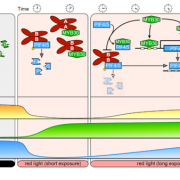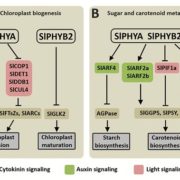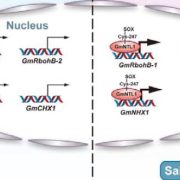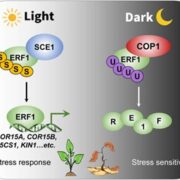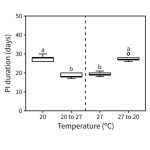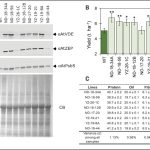Shade finds a salty connection
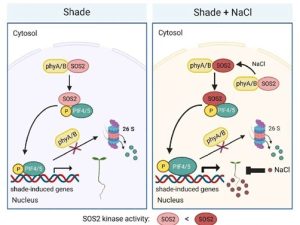 Light acts as a crucial signal for plant growth and development and is perceived by several types of photoreceptors including phytochromes (phys). Sun-loving plants often exhibit shade avoidance syndrome (SAS), like longer hypocotyl, lesser branching, and earlier flowering to outcompete their neighbors for light. Shade-induced elongation is mediated by the action of PHYTOCHROME INTERACTING FACTORs (PIFs), which are less abundant in light when phytochrome B (phyB) is active, and more abundant in shade when phyB is less active. Han et al. showed that SALT OVERLY SENSITIVE2 (SOS2), a salt stress signal transducer, promotes SAS in Arabidopsis. SOS2 is a protein kinase that phosphorylates PIF4 and PIF5, which both increases their level of protein accumulation and weakens the antagonistic activity of phyB on PIFs. Thus, although salt limits cell elongation, the interaction between SOS2 and PIF4 and PIF5 helps to sustain growth in the shade. In a related paper, the same research group also showed that phytochromes enhance SOS2-mediated PIF1 and PIF3 phosphorylation and degradation to promote salt tolerance. Together, these studies show that through interactions with different PIFs, plants benefit from salt- and light-activated SOS2, which not only boosts plant tolerance to salt but also encourages plant adaptation to shade. (Summary by Rajarshi Sanyal, @rajarshi_sanyal) Plant Cell, 10.1093/plcell/koad119 and 10.1093/plcell/koad117.
Light acts as a crucial signal for plant growth and development and is perceived by several types of photoreceptors including phytochromes (phys). Sun-loving plants often exhibit shade avoidance syndrome (SAS), like longer hypocotyl, lesser branching, and earlier flowering to outcompete their neighbors for light. Shade-induced elongation is mediated by the action of PHYTOCHROME INTERACTING FACTORs (PIFs), which are less abundant in light when phytochrome B (phyB) is active, and more abundant in shade when phyB is less active. Han et al. showed that SALT OVERLY SENSITIVE2 (SOS2), a salt stress signal transducer, promotes SAS in Arabidopsis. SOS2 is a protein kinase that phosphorylates PIF4 and PIF5, which both increases their level of protein accumulation and weakens the antagonistic activity of phyB on PIFs. Thus, although salt limits cell elongation, the interaction between SOS2 and PIF4 and PIF5 helps to sustain growth in the shade. In a related paper, the same research group also showed that phytochromes enhance SOS2-mediated PIF1 and PIF3 phosphorylation and degradation to promote salt tolerance. Together, these studies show that through interactions with different PIFs, plants benefit from salt- and light-activated SOS2, which not only boosts plant tolerance to salt but also encourages plant adaptation to shade. (Summary by Rajarshi Sanyal, @rajarshi_sanyal) Plant Cell, 10.1093/plcell/koad119 and 10.1093/plcell/koad117.




